Looking to Turkey for optimism
With the European economy and automotive sales outlook uncertain, logistics providers have looked to Turkey for expansion. Last year set records as production increased 9% and the domestic market rose by 15%. Imports rose while exports also remained strong, which makes Turkey one of the few markets with reasonable potential for balancing vehicle flows for shipping lines and at ports. But it is a fragmented market that is also still lacking rail links and logistics capacity in some segments. Ports lack advanced services, while customs are slow and costly.
There are signs that 2012 will be a difficult year. With its main export markets in Western Europe, production in Turkey is dependent on a strong European market. And although Turkey has surplus in its vehicle trade balance, government concerns over an overall trade deficit, together with inflation, have led to measures to slow imports. Furthermore, higher duties and a rise in the special consumption tax applied last year appear to be slowing the domestic market. Nevertheless, Turkey’s prospects are positive.
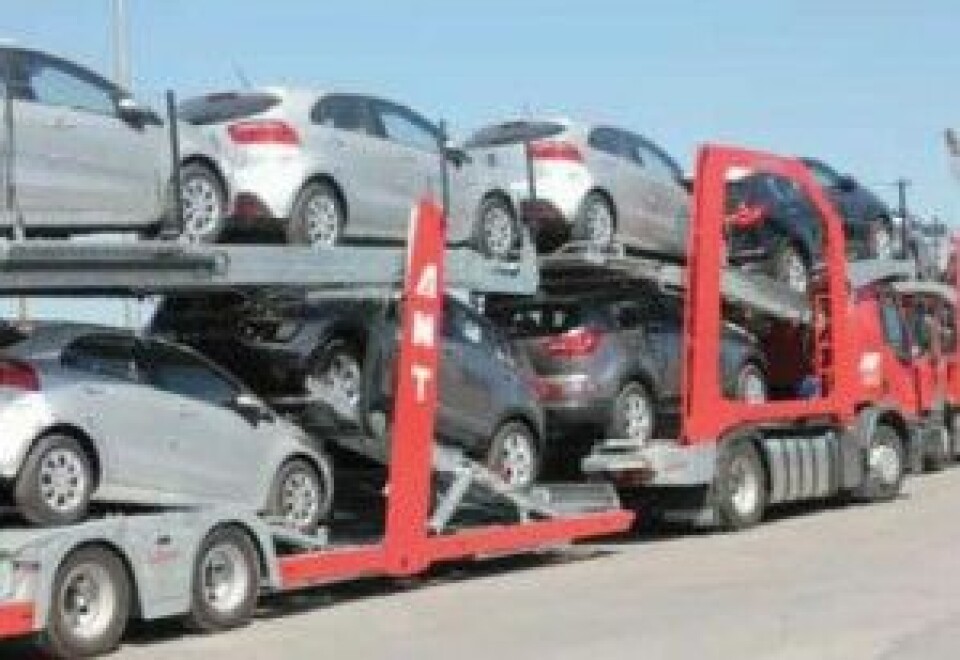
Production is competitive and the supply chain reasonably efficient. Exporters are diversifying into markets beyond the EU, including the US, Russia, the Middle East, North Africa and Asia. Some Turkish providers are also looking for opportunities beyond their own market, with vehicle deliveries moving to emerging markets such as Iraq. Plans for a rail tunnel beneath the Istanbul Strait should open up new outbound flows to ports and directly to Europe, although the limited infrastructure will be a challenge for the foreseeable future. Manufacturers agree that Turkey needs more 3PLs and 4PLs in the market to improve distribution.
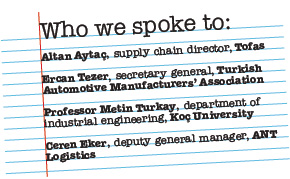
Impact of the eurozone crisis
In 2011, the number of vehicles built in Turkey increased to 1.2m units, while the total domestic market–including domestic production and imports of light and commercial vehicles–surpassed 900,000 units. The stricken European economy led to slower growth for exports, which grew by 5%, including just a 1% increase in the number of passenger cars. But even before the market saw double-digit declines in the early part of this year, troubles have been visible for several months. According to Altan Aytaç, supply chain director of the Fiat joint venture, Tofas, the industry began to see an impact from the current economic difficulties in Europe as of the second half of 2011, when production started to decline. Ercan Tezer, the Secretary General of the Turkish Automotive Manufacturers’ Association (OSD), says that despite this setback, 2011 was still a record year. “If we evaluate figures for the whole year, we can say it was a successful one, particularly in respect of the domestic market,” he says. “However, the slowdown which started after the second half and, particularly the regression observed in the last quarter, limited the overall increase.”
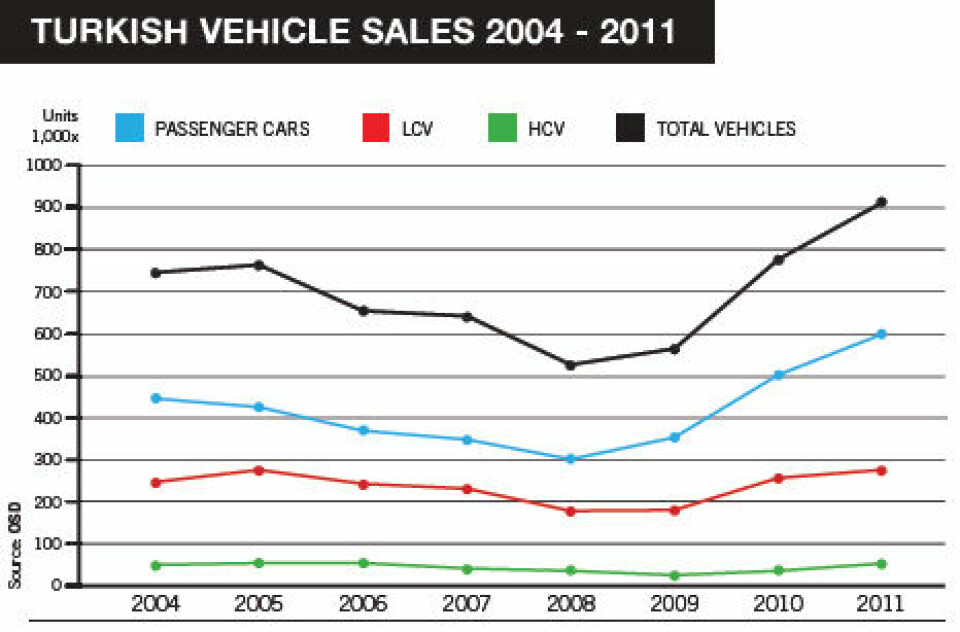
Of the 910,000-unit domestic market, 66% were cars, 30% LCVs and the rest heavy vehicles. Around 70% of the cars sold were imported, compared with 40% in the LCV sector. Meanwhile, about 65% of vehicles built in Turkey were exported. According to Professor Metin Turkay of the Department of Industrial Engineering at Koç University in Istanbul, the situation with the euro remains the biggest threat to further expansion of the market for Turkish-built vehicles. Despite this, 2012 need not be all doom and gloom, given the diversification of markets into which Turkish-built vehicles are being sold, such as East Europe, Russia, Ukraine, the Middle East and the USA. At the same time, an increase in tax on imported vehicles with large engines should boost sales for domestically produced alternatives. “I expect the market for LCVs, trucks and buses to expand. Some manufacturers are already planning to begin assembly of new LCV models and also expand their manufacturing capacity in this segment,” says Turkay.
Aytaç still has reservations about 2012. “Since the recession in Europe is not over yet, we expect 2012 to be a very tough year for the Turkish industry,” he says. “We are also forecasting a 10-15% decrease in the size of the domestic market this year, but we don’t expect a significant change in the local import ratios in 2012.” But he is bullish on the industry’s long-term prospects. “On the other hand, the overall Turkish automotive industry is growing, with new models due to come into production and new investment potential. We may therefore see some increase in the share of locally-built vehicles in the next 3-5 years.”
Light coming from commercial vehicles
The Turkish automotive industry is ranked first in Europe for the production of LCVs and second overall in bus production. “In this latter sector, where Turkey has developed local brands, many of which have been exported to the EU, manufacturers have been extremely successful,” says Tezer. Aytaç points out that this strength in the market has come about over the past decade. Indeed, 60% of Tofas’ total production consists of LCVs, with more than 1m of Fiat’s Doblò model having been produced at the company’s Bursa facility over the past ten years. “More than 60% of the LCV market is dominated by minivans, but the recent increase in a special consumption tax applied to mini-vans may well cause a halt to growth or even result in a downturn in sales,” says Tezer.
“Despite this, there remains potential for the development of the domestic LCV market. Turkey will continue to increase the number of LCVs built, something which will be helped by the opening up of new markets and changes in customer needs,” he says. He cites as an example the start of the production last year at Tofas of the new Doblò model. The company is also building new models for Opel/Vauxhall, while in 2012 exports of the Doblò to the United States will commence, too.
Improving distribution...by rail
While logistics development has gone hand-in-hand with the development of the automotive sector, problems still remain. The movement of finished vehicles by rail in Turkey is minimal. Tezer points out that this is mainly a result of geographic constraints. Turkay agrees that rail is at a disadvantage in that, while all the manufacturers are located in the Anatolian (Asian) side of Turkey, the main export market is in Europe and there is, currently, no cross-Bosporus rail link. However, markets in East Europe could become accessible by rail once the Marmaray rail tunnel opens in 2014. “All the main manufacturers have plants close to the Sea of Marmara, where several major export ports are located.
Since sea offers significant cost advantages to destinations in Europe, road haulage dominates the movement of outbound vehicles between manufacturing facilities and the ports over short distances,” he says. Nevertheless, Tezer believes that there has been a change in mind-set within Turkey. “In the last 10 years, the government has paid great attention to the development of the rail network, not only in increasing its coverage, but also in the quality of the service,” he says. “Nevertheless, because of the sheer quantity of exports, maritime transport between Turkey and Europe is always going to have an advantage.” Aytaç emphasises current difficulties by pointing out that Tofas’ production plant at Bursa–which is the main centre in terms of volume–is not rail connected. “With limited rail infrastructure, road hauliers have grown strong and are able to satisfy the needs of the OEMs and dealer networks in terms of capacity, service quality and cost,” he says. “On the other hand, as an OEM, I always say that the prices offered by this sector could be more competitive.”
...by road
Road haulage capacity has improved in recent years. Even in December, which is a traditionally high demand month, service provision is now more than adequate, Aytaç says. Overall quality is also improving, he argues, with partial fleet renewals taking place every year, regular driver training resulting in less damage and a more professional management of urgent deliveries in place. Turkay confirms that specialist road haulage fleets serving the automotive market have survived the recession reasonably intact, with the upswing in the market last year helping considerably.
“Nevertheless, the reduction of EU imports as of December 2011 has affected luxury cars with large engine sizes. As a result, companies specialising in this sub-sector have suffered,” he says. Tezer, for his part, stresses that, while Turkish road haulage companies offer good service quality and sufficient capacity, problems exist as to how exactly the burgeoning domestic market should be served. “Most of these vehicles are distributed by road, but there are simply not enough distribution hubs. In my opinion, in future, we will need to combine different transport modes to minimise distribution costs,” he says. Turkay is also worried by the lack of any significant domestic distribution hubs. “There is a big need for 3PLs and 4PLs to enter this market in order to minimise distribution costs, whilst at the same time bringing rail and sea transport into the domestic distribution network,” he says.
...by sea
In respect of maritime outlets, Turkay identifies a definite lack of adequate facilities at the main finished vehicles export ports of Yeniköy, Gemport, Derince, AutoPort-Gölcük, Yilport, Evyap, Borusan and Roda. “Currently, these ports are approaching their limit in terms of the number of vehicles they can handle. To boost capacity, they must be able to accommodate more vessel calls and also expand the available parking area, all of which involves somehow upgrading infrastructure,” he says.
points out that Turkish manufacturers will have to continue using port facilities located in the Marmara region, although because of their location, capacity remains somewhat limited. “This is definitely an issue that will have to be addressed,” he concludes. Tofas mainly makes use of Gemport, some 30km south of Bursa, for both imports and exports, although around 10% of the company’s outbound volumes also pass through the port of Izmir, on Turkey’s west coast. “For current volumes, there is sufficient port infrastructure in place. But both capacity and infrastructure have to be improved and enhanced to meet future targets, given that the Turkish automotive industry is aiming to produce 2m units in the medium to long term. Rail connectivity to ports will also have to be addressed,” says Aytaç.
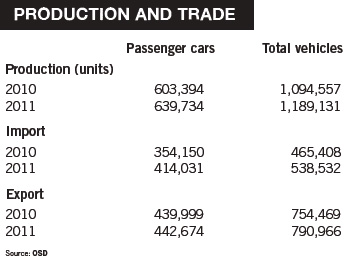
Entering new markets
Turkish vehicle output, as has been pointed out, has always been focused on Europe. This is because, traditionally, the finished vehicle manufacturers in Turkey have been directly managed by the European arms of their respective companies, with Fiat, Renault and Ford being the main examples. Japanese (Toyota and Honda) and South Korean (Hyundai) manufacturers also use Turkey to target European markets.
“In order for a change to take place, it is these manufacturers that have to do it, revamping their market strategies and rethinking allocations of where they want to send their finished vehicles,” says Turkay. Aytaç points out that whenever Europe goes into recession, Turkish-based carmakers take another look at other markets to offset losses in production and sales. “The main problem is that demand in most alternative markets fluctuates a lot and some of them are not big enough to absorb the output not wanted in Europe. In addition, those countries that are growing quickly also have developing automotive facilities of their own. Despite that, there has been a significant increase of Turkish-produced vehicles exported to the BRIC countries, to Ukraine, Iran, and to the US,” he says, adding that these are not just finished vehicles, but also completely knocked down and semi-knocked down units and spare parts.
Tezer also acknowledges that local manufacturers have already begun to increase exports to the US, albeit of a limited nature. “We are also interested in the Middle East and North Africa, but here market conditions can be rather unstable,” he says. One company that has already taken the plunge is Istanbulbased haulier, ANT Logistics, which concentrates most of its efforts on the growing markets to be found in the Middle East–mainly Syria and Iraq–and in Europe’s most south easterly countries: Armenia, Georgia and Azerbaijan. According to deputy general manager, Ceren Eker, Turkey is viewed as a safe haven by vehicle manufacturers in both the Far East and Europe, who will offload vehicles in Turkish ports, allowing companies such as ANT to then transport them to their final destination. “We’re not the only company that operates from Turkey into this region; there are competitors. But it’s not a huge market and there’s not a large amount of competition,” she says. Furthermore, she concedes that dealing with these countries can be “challenging”, especially those, such as Iraq and Syria, where civil unrest remains a problem.
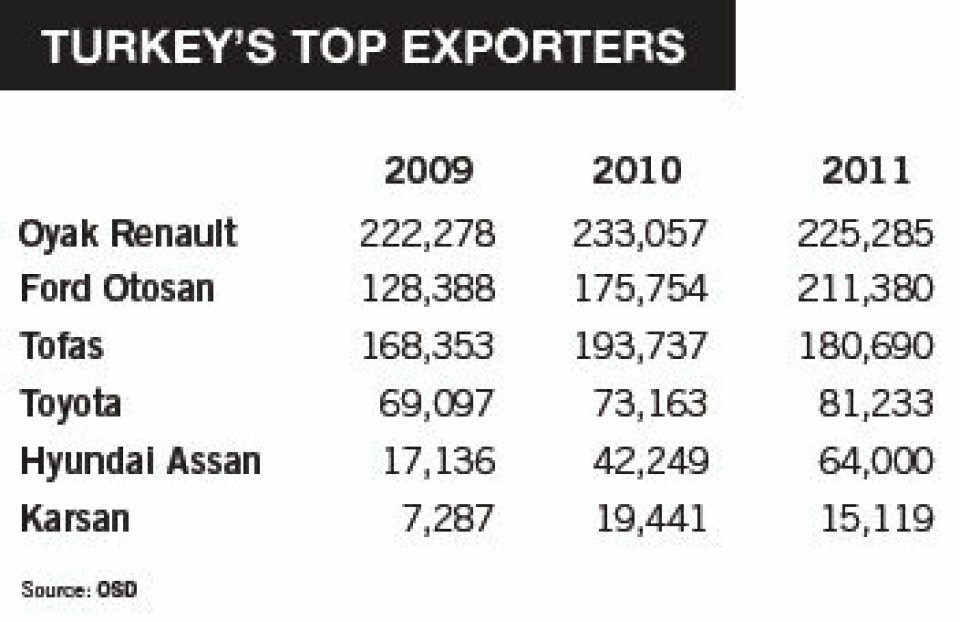
Iraq is particularly interesting, because of a pent-up demand for commercial vehicles. Although ANT concentrates mainly on cars, it also transports some LCVs, trucks and buses into this region, but not regularly. “Demand for finished vehicles of all types in Iraq remains high. Last year was not a good one, because of the financial crisis, with banks in Iraq struggling to supply credit. However, for 2012, the outlook is better, because crucial interest rates have fallen,” she says. As to whether domestically-produced vehicles will be suitable for countries such as Iraq is another question all together, she notes, pointing out that Turkish production is heavily focused on the main European market, with prices, models and standards possibly too expensive to make a major penetration in those countries to the south and east. This region is also full of surprises, with new taxes and unexplained surcharges appearing with no prior warning, she adds.
Worse still, there is no possibility of a backload, so costs for specialist hauliers are effectively doubled, making this region a difficult one from which to make money. Interestingly, Bulgarian hauliers are able to work into Armenia, Azerbaijan, Georgia, Iraq and Syria, because the relatively small scale of the market there will often justify the expense of sending a car carrier all the way from Europe, with the driver then picking up a backload in Turkey itself for the return journey westwards across the Bosporus. This means that, while most of Turkey’s finished vehicle output goes to Europe by sea, smaller consignments can also be economically driven by road, thanks to the Bulgarian hauliers. Eker points out that, while not the only nationality involved in these much larger hauls, Bulgarian companies have taken advantage of their close proximity to Turkey to leverage inherent advantages, the most important being that Bulgaria, as an EU member, can operate much more cheaply in other member states than can Turkish hauliers. “ANT doesn’t try to compete on regular services to Europe, except if we are asked to transport a spot load,” she says.
There are, nevertheless, around four or five large Turkish specialists operating fleets of around 200 car carriers, although some found the recession a major challenge. “It was impossible to redeploy excess capacity in other sectors, because of the specialised nature of a car carrier business,” Eker says. “Companies have had to find alternative ways to hedge risk or risk going bankrupt.” Remaining operators have either had to have a broad portfolio of interests, such as the transporting of fuel, or become specialists in a particular region, which is essentially what ANT has done. ANT policy is to remain a medium-sized business, eventually operating a fleet of around 100 car transporters, which means keeping risk exposure as low as possible. The company’s owners’ cautious approach to expansion, which has seen the fleet double in size to 60 units in recent years, has paid dividends.
“We believe that an eventual fleet of 100 units will give us the maximum flexibility that we need, whilst allowing us to remain competitive,” says Eker. “It’s a challenge to manage much larger fleets here, especially given the fragility of the Turkish economy.”





